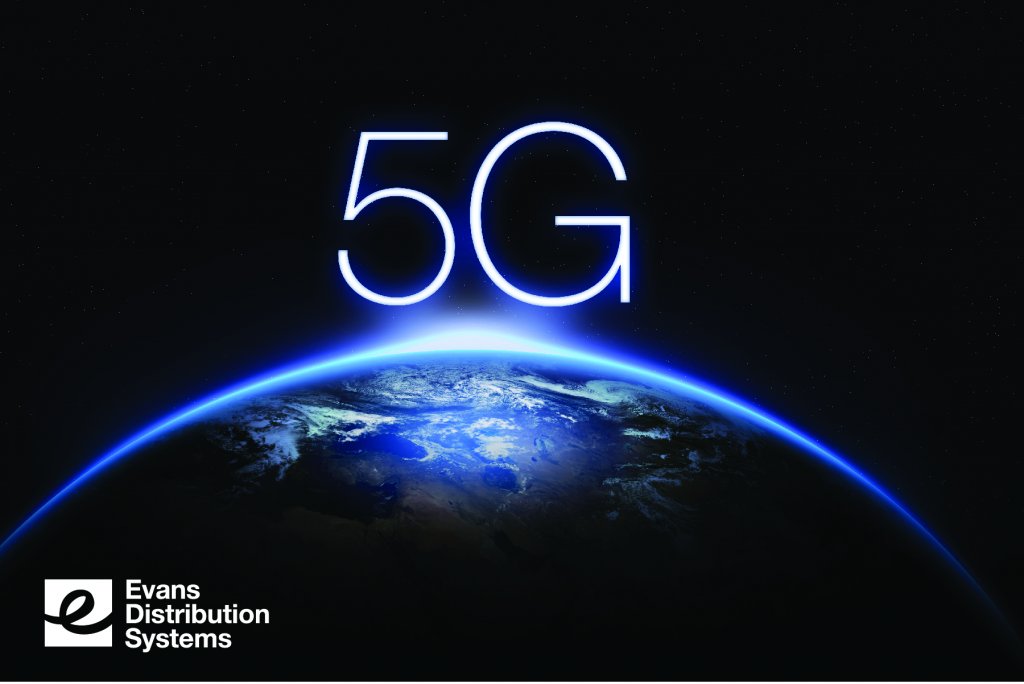Technology companies have stirred up excitement about the 5G network for years. Anticipation around the upgrade from 4G to 5G has drawn attention to the impact a network can have on businesses. But what about the impact on our supply chains? Will this be the answer to today’s supply chain disruptions? What can we expect during a transition to a new network?
5G Explained
5G stands for fifth-generation cellular network. It is the successor of 4G and has been gradually deployed by cellular companies since 2019, mostly in areas with dense populations. The network is engineered to have more speed, low latency, and more wireless connectivity than any other system before it. It increases bandwidth and antenna technology which advances data transmission over wireless networks.
The key difference between 4G and 5G is the wireless network structure. According to TechTarget, wireless networks are generated through cell sites that transmit data through radio waves. In general, 4G relies on high-powered, low-frequency cell towers to transmit data over long distances. 5G relies on high volume, smaller cell towers that transmit data short distances, through millimeter waves (MM). Basically, the shorter the distance, the faster data is transmitted.
Distance creates opportunities for disruptions, that can be caused by weather or objects, in both 4G and 5G wireless networks. Unlike 4G, the 5G network utilizes a combination of low, medium, and high-frequency radio waves to overcome these obstructions and speed up connectivity.
The View from a 5G World
The 5G world is one that has higher frequencies, bandwidth, data rates, and mobile broadband. It also has low latency, meaning less delay in data transmission. When applied to the supply chain, several key components will be enhanced.
- Connectivity = Visibility: Logistics companies rely on barcode scanners and other technologies to track and trace products through their warehouse and on the road. The more connected these technologies become, the more advanced visibility becomes.
- Speed = Real-time Information: Logistics often boils down to speed and efficiency. Operations benefit from accurate, real-time information from optimized performance. Details such as SKUs, dates, quantities, and orders will deepen knowledge at every level of an organization.
- Bandwidth = Increased Capacity: Bandwidth allows logistics companies to operate more technology at higher power at the same time. This will allow us to increase operational capacity within a space without losing connection or having to compete with other companies.
When thinking about the next level of logistics, automation, artificial intelligence, machine learning, vision technology, Internet of Things, sensors, data portals—all of these innovations benefit from the connectivity, speed, and bandwidth that 5G offers.
5G Today
Many of us are still operating on 4G networks. It will take time before everyone transitions to the 5G network. The cellular companies are tackling the most populated areas first to have the greatest impact. It is estimated we will not fully adopt 5G for another five to eight years.
The jump from 4G to 5G is not significant. However, devices operating on 3G will be obsolete. Why? The cellular companies are shutting down 3G networks to increase 5G bandwidth. As the transition to 5G continues, a 4G shutdown is not far behind. Another likely impact is more expensive service. The cellular companies have invested millions into the 5G upgrade and consumers are likely to pay for it in the long run with higher service rates. Still, with the overwhelming benefits 5G will bring, it’s worth the wait and the expense.

